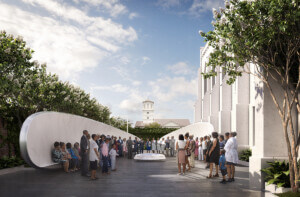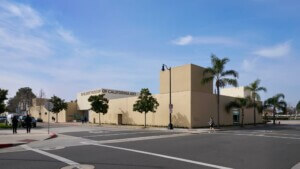On November 12, the permanent memorial to the victims of the Sandy Hook shooting opened in Newtown, Connecticut. Titled The Clearing and designed by SWA, the landscape project honors the 20 children and six educators murdered in the tragic mass shooting that took place on December 14, 2012, at Sandy Hook Elementary School. The design was selected from a pool of 189 international proposals submitted through a public competition, and construction began last year.
“Yesterday we had kind of a steady stream of people from the public; today it’s a little bit quieter,” Ben Waldo remarked during a press visit. Waldo and his colleague Dan Affleck are the designers of the memorial. They submitted their proposal independently as a “passion project” but brought it to SWA when it was selected as a finalist in the competition, as both work in SWA’s San Francisco office. The work was personal, as Waldo grew up in the nearby town of West Hartford.
This memorial extends a focus on nature and healing established by reconstruction efforts. Almost a year after the attack, which remains the fourth worst mass shooting in American history, the prior school building was demolished. A new school building, designed by Svigals + Partners and opened in 2016, incorporated passive security elements within its welcoming campus.
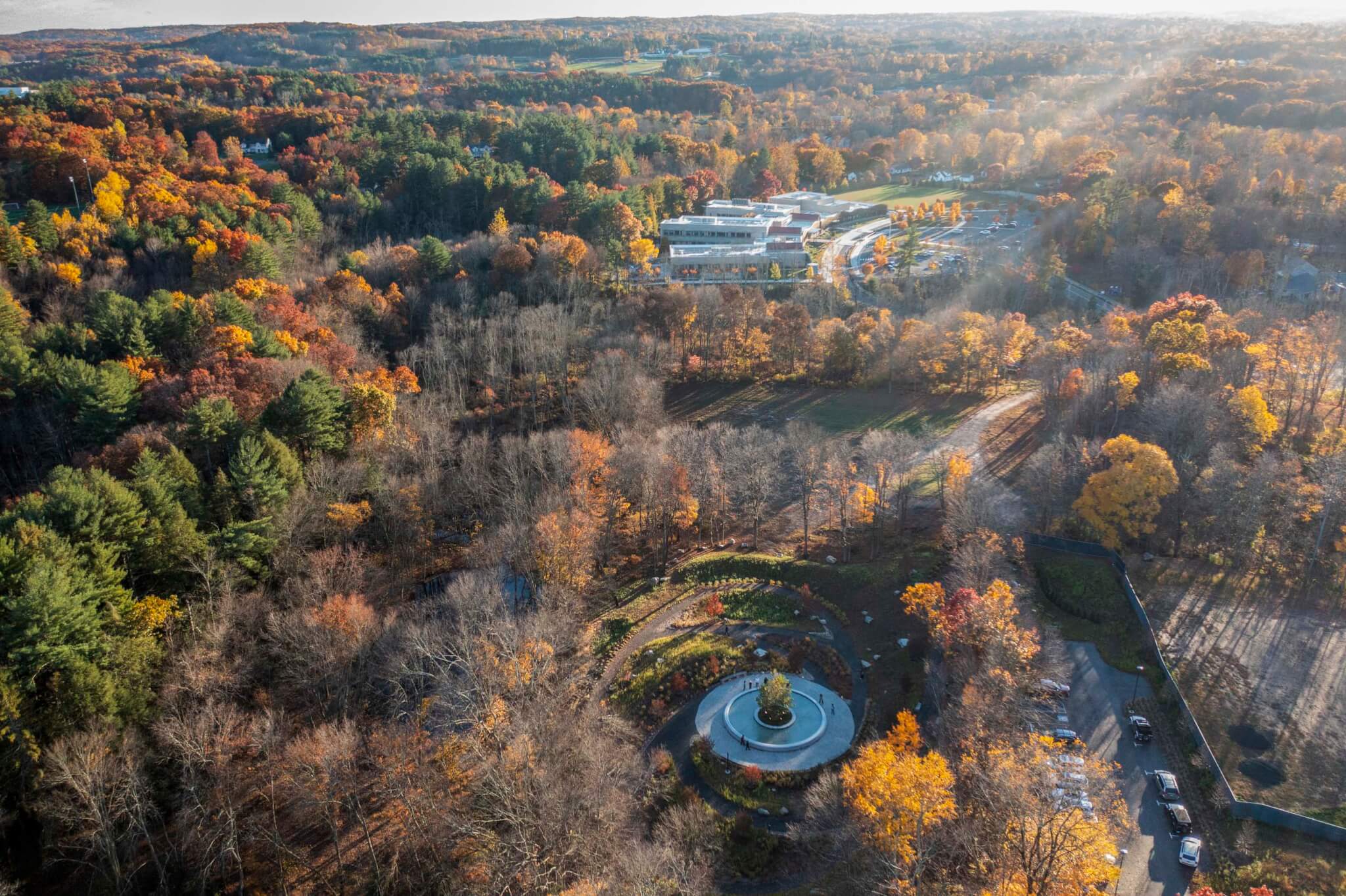
The memorial occupies an acre of a 5.3-acre site and is set off to the north of the school. The location was “a clearing of sorts already,” Waldo said. Previously a Little League baseball field, the commission chose the site for its proximity to the school where the joyous shrieks of playing children could be heard.
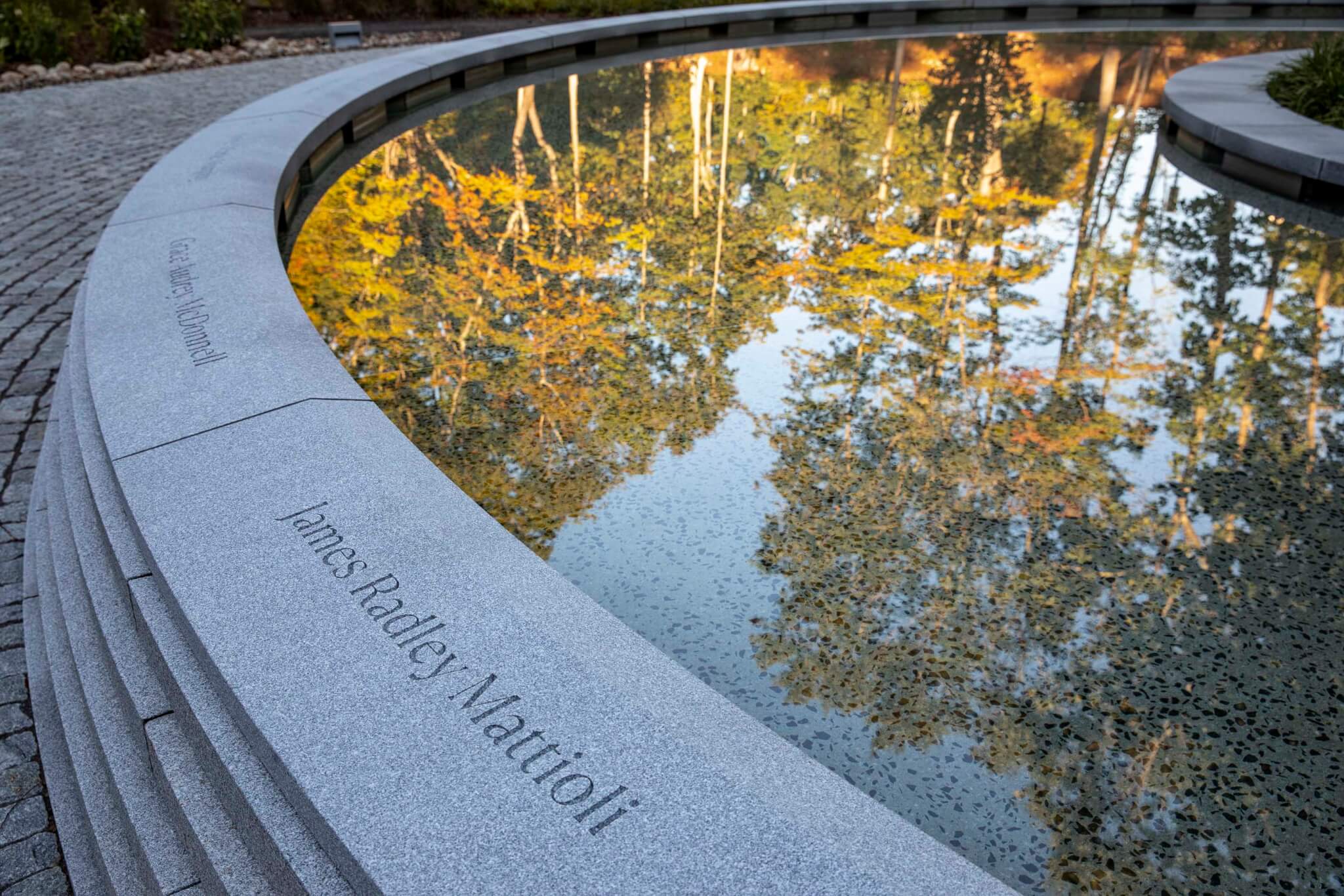
One arrives to the memorial site via a path that runs downhill flanked by wildflower patches. Waldo and Affleck’s design guides visitors along routes that rotate through woodlands and meadows. The walkways spiral inward and connect at a central clearing where a young sycamore grows at the center of a pool of water. The pool’s detailing follows the landscaping and rotates clockwise, so the motion of the water embraces the tree. The names of the victims are engraved on top of the pool’s granite perimeter wall. Three wood-topped benches offer a place to sit, and lighting throughout illuminates the landscape for nighttime visits.
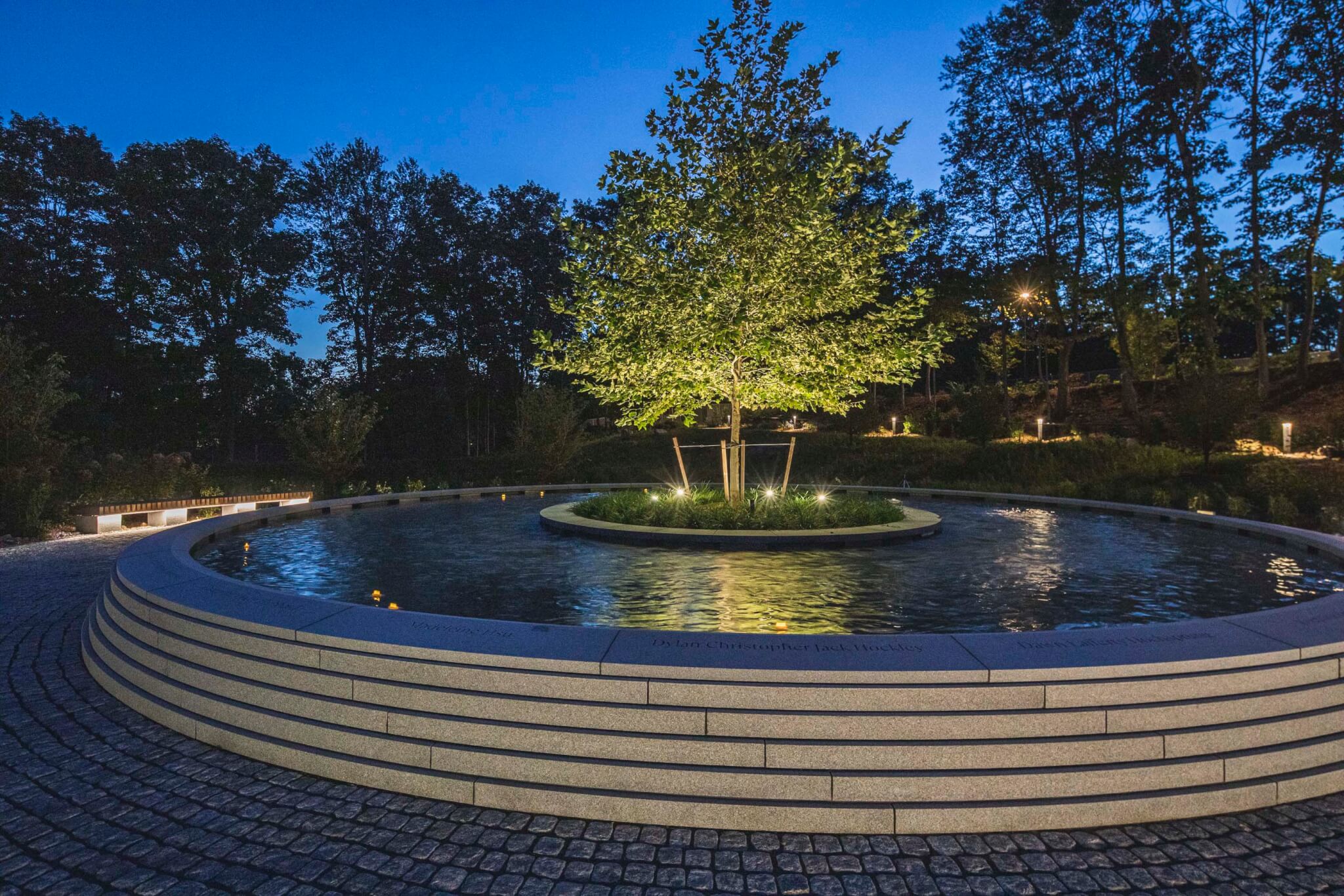
At the start of the path back at the top of the hill, a large granite item is labeled with a welcoming message and this statement: “Encased within this stone is the sacred soil created from the many items left in spontaneous memorials throughout the town on the days following the tragedy.”
Waldo and Affleck noted that their completed memorial, although the only “commissioned” monument, it was not the only one created in honor of those lost. In the days and weeks following the shooting, locals laid out “impromptu memorials” including a series of benches with the names of the children, Waldo remembered. Affleck shared that the town burned many of these items, which had been previously stored in a warehouse after their roles as temporary expressions of grief. The 3 cubic yards of ash became “the sacred soil,” a part of which is now stored inside the granite tomb.
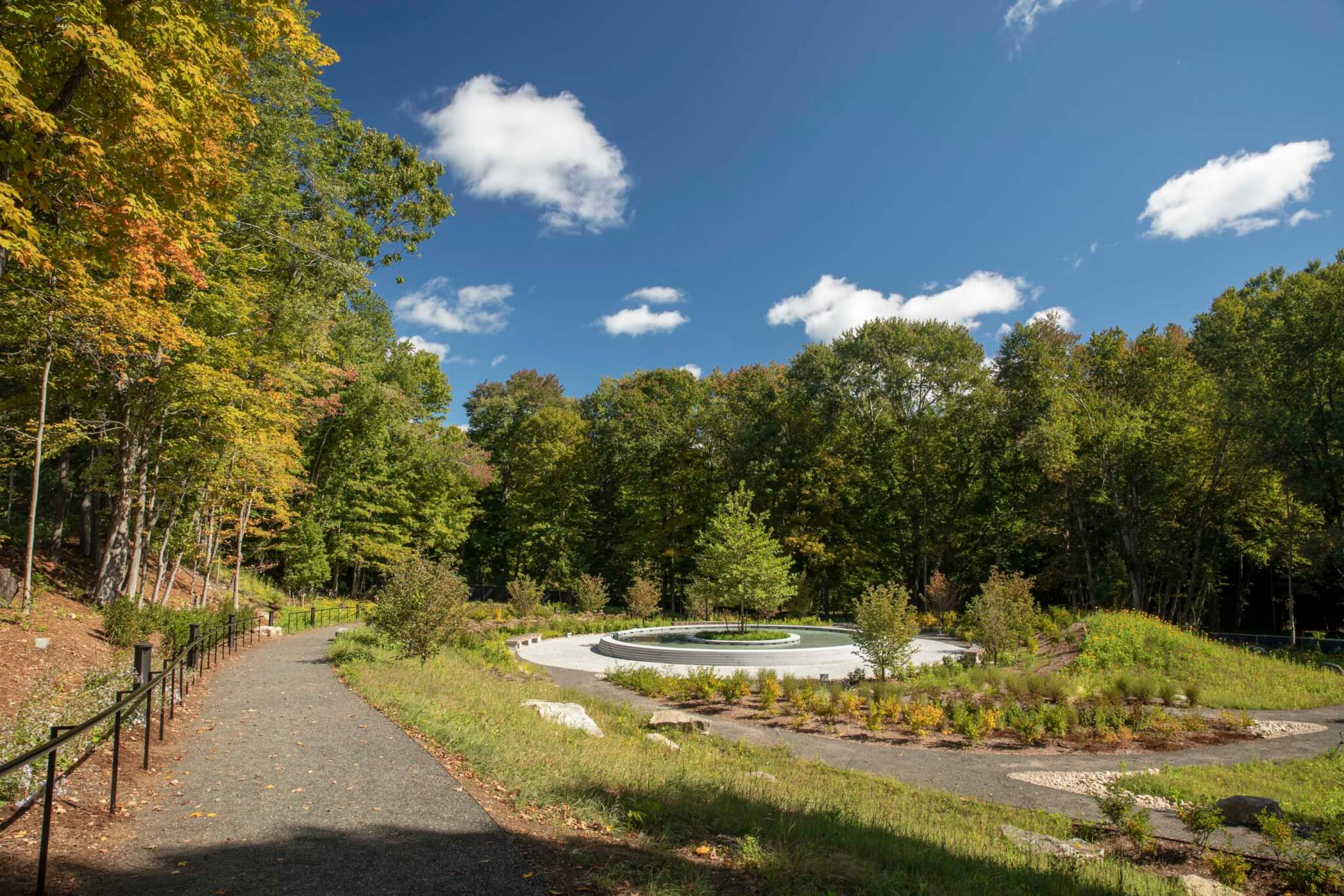
As of June 2022, mass shootings in the U.S. have nearly tripled since the attack at Sandy Hook Elementary School 2012. In the first months of this year, there was a mass shooting every week. Just now, people are grieving over an attack in Denver that left five people dead and an incident at the University of Virginia which killed three college students. Gun violence has unfortunately become a commonplace occurrence in America.
In response, architects now regularly design sites of memory and grief, as they have for centuries. In these instances, it’s important to center the needs of the community. How do you design a site at the center of trauma? And, more intensely, how do you design a memorial for a condition that is not yet in our past?
Architects also participate in conversations about how to make public spaces safer in the absence of wider reforms. Of central concern is how to make schools safer. What formal measures can be enacted, such as controlled perimeters, hardened walls, strategically placed windows, or varied elevations to obscure sightlines? And, more invisibly, what systems could be installed to better protect students? The seriousness with which architects respond to this issue is of utmost importance if present national conditions continue. One hopes that in the future there will be no need for memorials to commemorate those lost to gun violence.
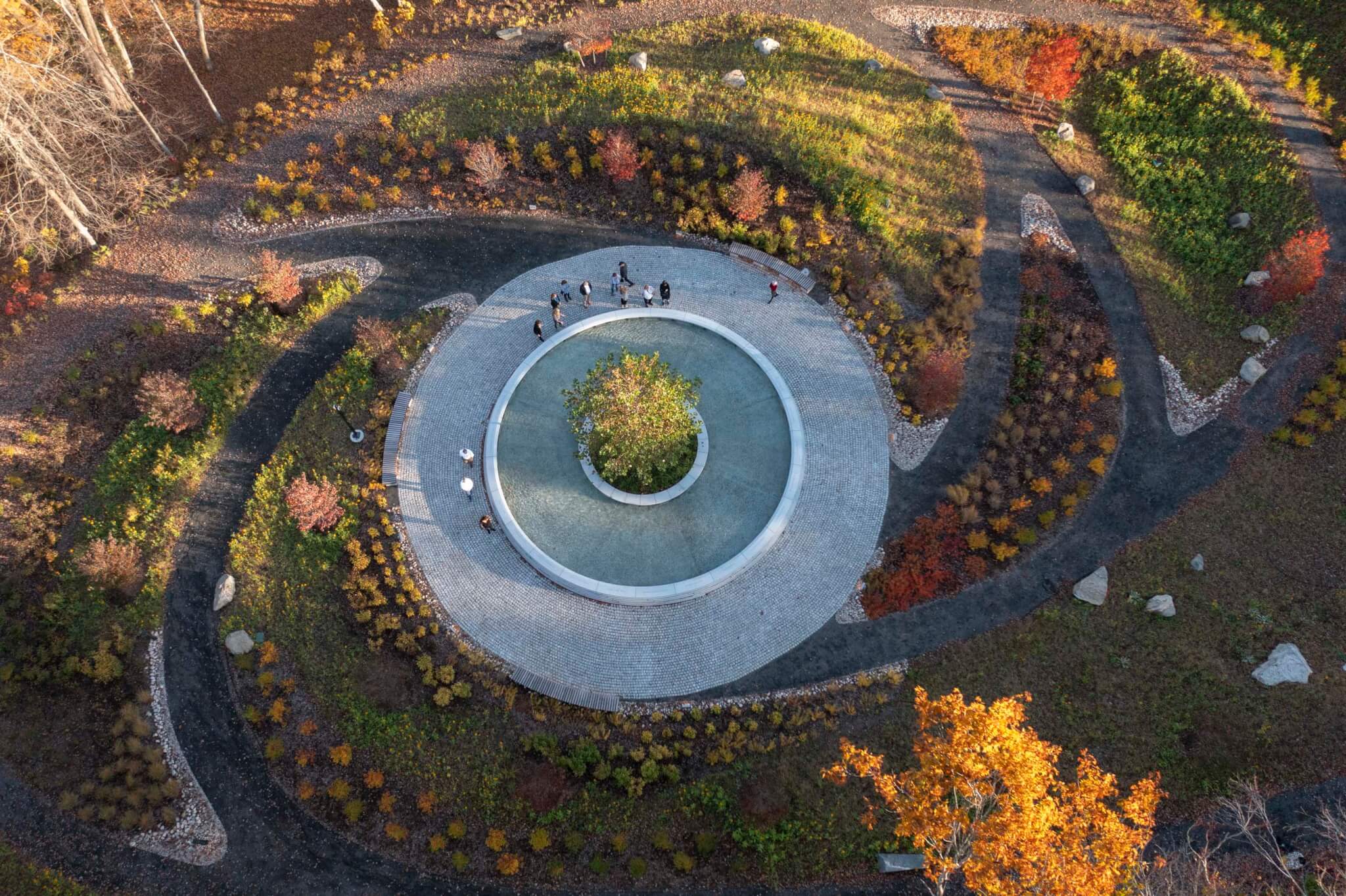
Still, these sites offer some solace through contemplation in a natural setting. During the weekend before the opening of the Sandy Hook memorial, over one hundred people visited the site. “This was the first time some of the families saw the memorial,” Waldo said. He mentioned that “a lot of the parents thanked us” and described the scene as “very beautiful.”
Keren Dillard is a New York–based architectural designer and researcher, a graduate of Barnard College, and a current a Masters of Architecture candidate at Princeton University School of Architecture.








